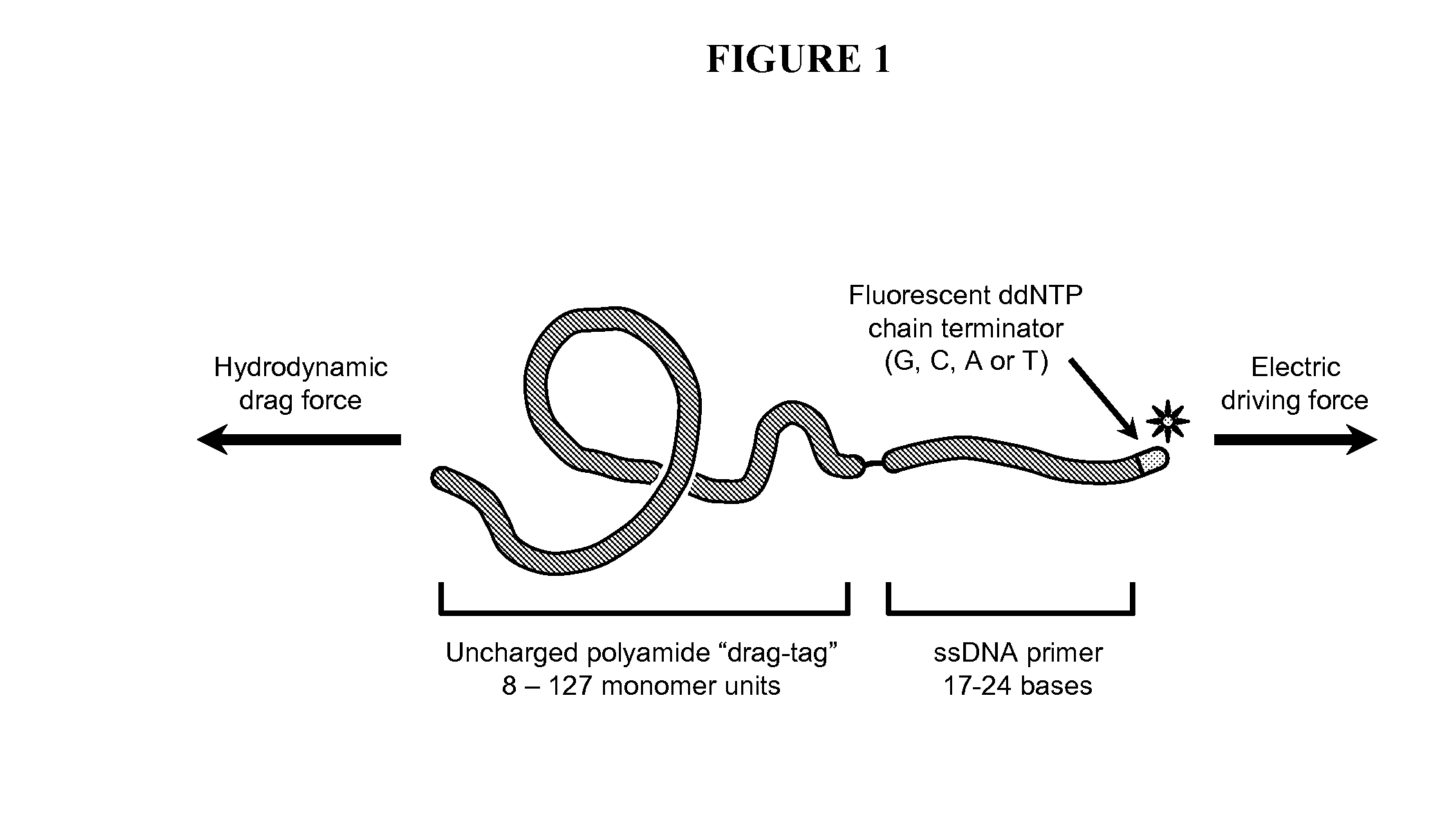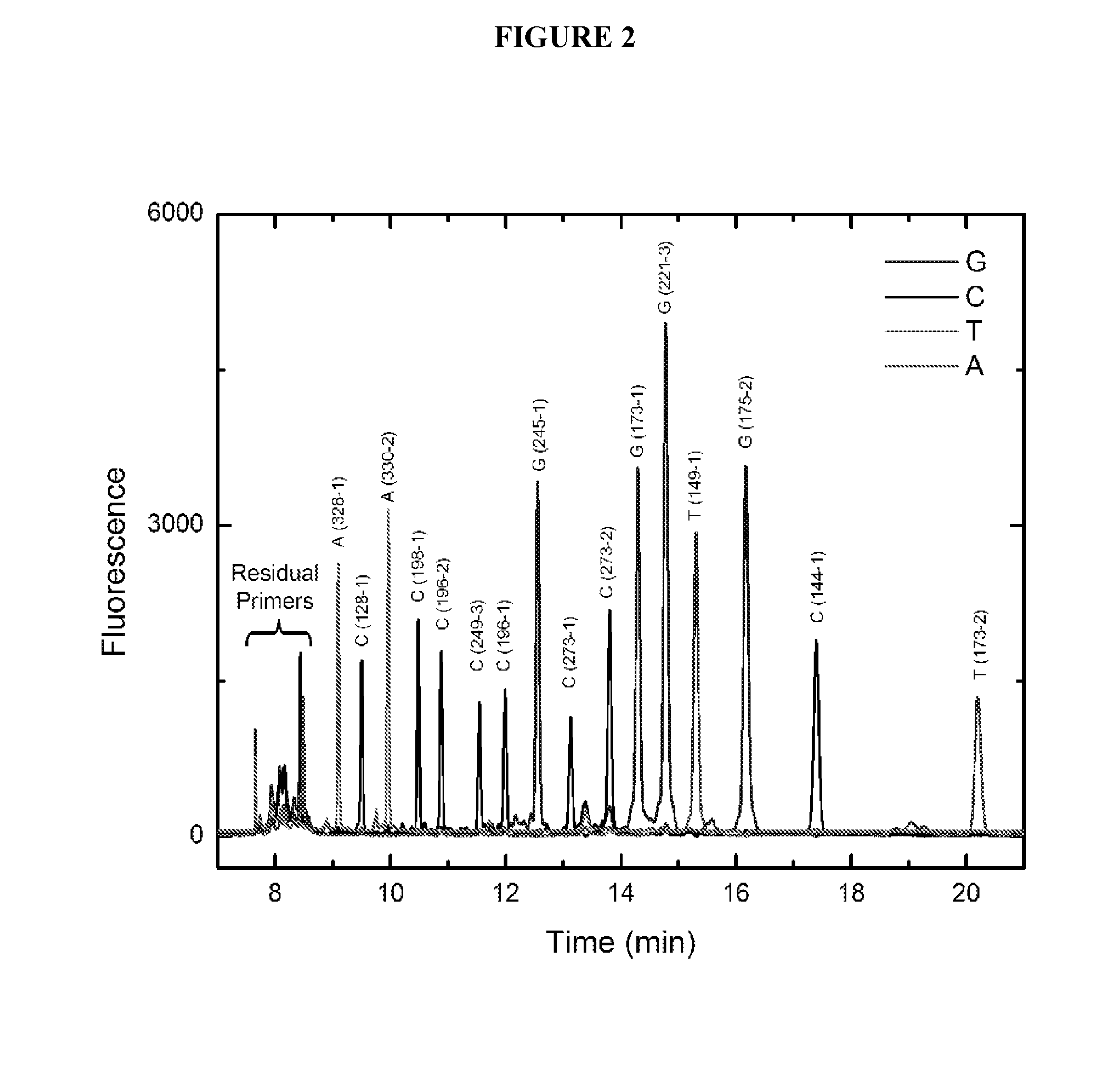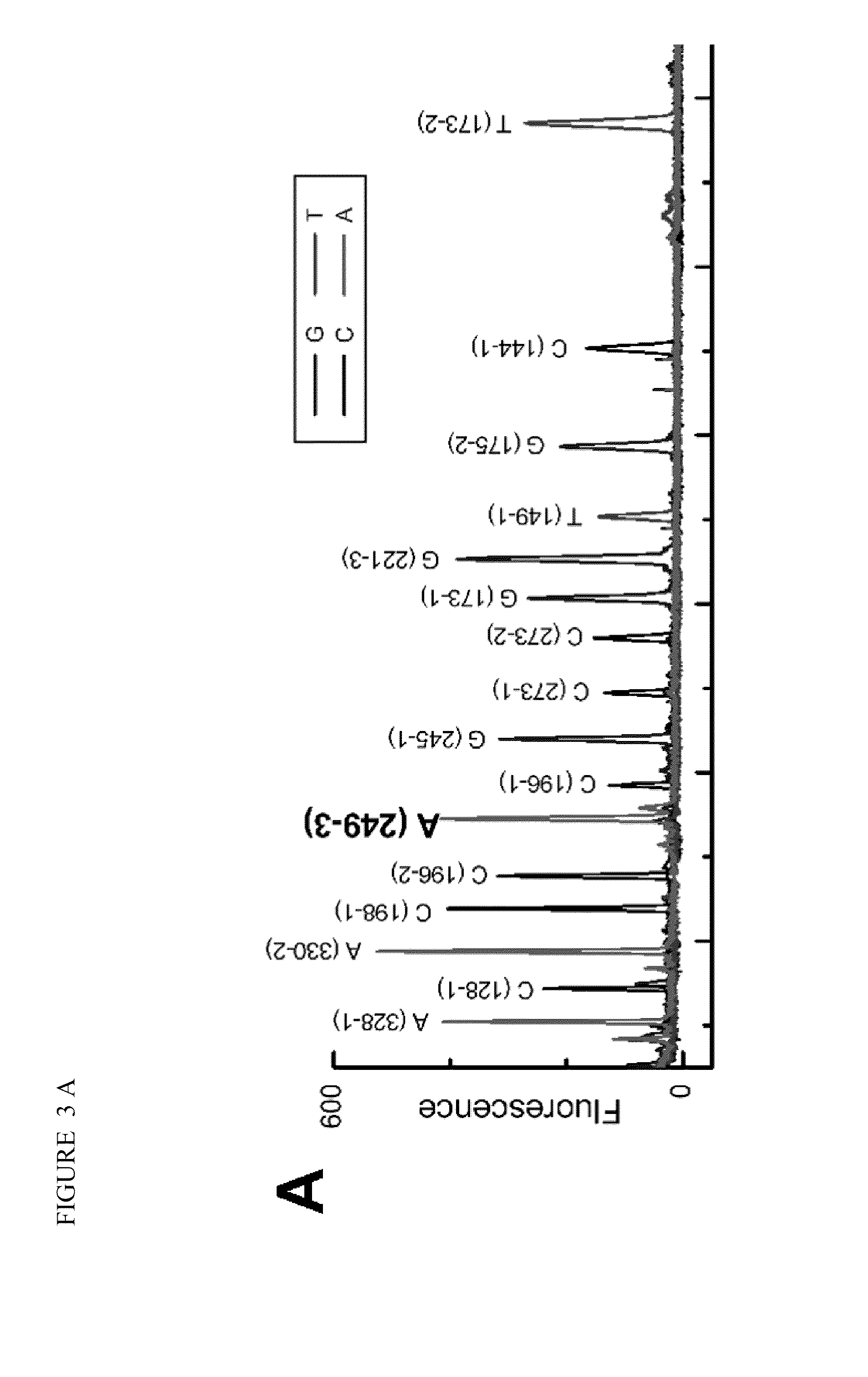Compositions and methods for free-solution conjugate nucleic acid analysis
a conjugate nucleic acid and free-solution technology, applied in the field of free-solution conjugate nucleic acid analysis, can solve the problems of high cost of snp detection, high cost of cae instruments, etc., and achieve the effects of rapid electrophoretic separation, precise length, and modification of the electrophoretic mobility of dna
- Summary
- Abstract
- Description
- Claims
- Application Information
AI Technical Summary
Benefits of technology
Problems solved by technology
Method used
Image
Examples
example 1
—Synthesis of Polypeptoid Drag-Tags
[0048]A series of 14 linear polypeptoid drag-tags ranging in size from 8 to 60 N-methoxyethylglycine (NMEG) monomers was synthesized on an ABI 433A automated peptide synthesizer (Applied Biosystems, Foster City, Calif.) using the submonomer protocol.28, 35 Aliquots of resin were removed every 4 cycles of peptoid synthesis beginning with the 8th cycle. Peptoid chains were capped at the N-terminus with 3-maleimidopropionic acid using diisopropylcarbodiimide (DIC) as a coupling reagent.28 The maleimide-activated polypeptoids were cleaved from the resin with TFA and purified to near-total monodispersity by C18 reversed-phase HPLC. The monodispersity was assessed by FSCE by conjugating each polypeptoid to a fluorescently labeled, thiolated 20-base oligonucleotide, and analyzing by CE in free solution.28
[0049]The 15th drag-tag was a branched polypeptoid, consisting of a 30mer poly(NMEG) backbone derivatized with five 8mer oligo (NMEG) branches, activate...
example 2
—Primers for Single-Base Extension Reactions
[0050]A set of 16 oligonucleotide primers, as shown in Table 1, was synthesized by Integrated DNA Technologies (Coralville, Iowa, USA). The primers range in length from 17 to 23 bases and include a 5′-thiol functionality to enable conjugation to maleimide-activated drag-tags. Each primer has a calculated Tm of 55° C.±1° C. and was designed to avoid stable hairpin structures or extendable homodimers. The forward (+) and reverse (−) strands of p53 were both considered for primer design, especially when probing for mutations at 2 adjacent loci.
[0051]
TABLE 1Drag-tagMigrationWildExonLocusStrandSequence / SEQ ID NOSizeorderType9328-1−AAGACTTAGTACCTGAAGGGTGA (3) 81A5128-1+CCTTCCTCTTCCTACAGTACTCC (4)122C9330-2−GGTCCCAAGACTTAGTACCTGA (5)163A6198-1−ACT CCA CAC GCA AAT TTC CTT (6)204C6196-2−ACA CGC AAA TTT CCT TCC ACT (7)245C7249-3−GTG ATG ATG GTG AGG ATG GG (8)286C6196-1+CCC CTC CTC AGC ATC TTA TC (9)327C7245-1+TAA CAG TTC CTG CAT GGG C (10)368G8273-1...
example 3
—Template DNA for SBE Reactions and SBE Reactions
[0053]Previously characterized p53 wild-type and mutant samples were a gift from the National Institute of Standards and Technology. Exons 5-9 of the p53 gene (including introns) were present as an insert of approximately 2 kbp in a plasmid cloning vector. A plasmid containing the wild-type p53 gene was available in large quantity, and was used directly as a template for SBE reactions. Plasmid DNA containing variants of p53 exons 5-9 with point mutations were available in much lower quantities; the entire 2 kbp insert covering exons 5-9 was PCR-amplified prior to the SBE reaction, a common first step in SNP detection.12 Residual nucleotides and PCR primers that could interfere with the subsequent SBE reaction were digested by treating the PCR product with Shrimp Alkaline Phosphatase (USB, Cleveland, Ohio, USA) and Exonuclease I (USB) at 37° C. for 1 hour, followed by deactivation of the enzymes at 75° C. for 15 minutes.
[0054]SBE react...
PUM
| Property | Measurement | Unit |
|---|---|---|
| length | aaaaa | aaaaa |
| temperature | aaaaa | aaaaa |
| lengths | aaaaa | aaaaa |
Abstract
Description
Claims
Application Information
 Login to View More
Login to View More - R&D
- Intellectual Property
- Life Sciences
- Materials
- Tech Scout
- Unparalleled Data Quality
- Higher Quality Content
- 60% Fewer Hallucinations
Browse by: Latest US Patents, China's latest patents, Technical Efficacy Thesaurus, Application Domain, Technology Topic, Popular Technical Reports.
© 2025 PatSnap. All rights reserved.Legal|Privacy policy|Modern Slavery Act Transparency Statement|Sitemap|About US| Contact US: help@patsnap.com



